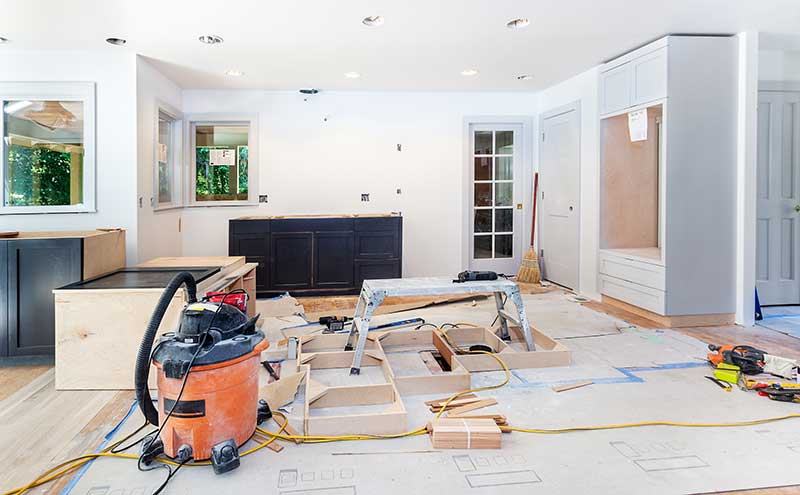How to Prepare for a Home Remodeling Project
Preparing for a home remodeling project is essential to ensure a smooth and successful renovation experience. Here are some steps to help you prepare:
Define your goals: Clearly outline your goals and objectives for the remodeling project. Determine what specific changes you want to make, whether it's renovating a particular room, adding more space, or improving functionality.
Set a budget: Determine your budget for the project. Research the average costs of similar renovations to get a rough idea of what to expect. Set aside a contingency fund for unexpected expenses that may arise during the project.
Research and gather ideas: Browse home improvement magazines, websites, and social media platforms to gather inspiration and ideas for your remodeling project. Create a vision board or a digital folder to compile images and design elements that you like.
Hire a reputable contractor: Take the time to research and find a reputable contractor with experience in the type of remodeling project you have in mind. Obtain multiple quotes, check references, and review their portfolio of past projects. Ensure the contractor is licensed, bonded, and insured.
Obtain necessary permits: Contact your local building department to determine if permits are required for your remodeling project. Obtain the necessary permits and ensure compliance with local building codes and regulations. Failing to obtain permits can lead to legal and financial complications.
Create a project timeline: Work with your contractor to create a detailed project timeline. Outline the start and end dates, major milestones, and anticipated completion time. Keep in mind that unexpected delays may occur, so build in some flexibility.
Make temporary living arrangements (if needed): If the remodeling project will disrupt your daily living, consider making temporary living arrangements, such as staying with family or renting a temporary residence. This will help minimize inconvenience and ensure a smoother construction process.
Protect belongings: Remove or protect valuable and fragile items from the construction area. Cover furniture, flooring, and other items to prevent dust and damage during the remodeling process.
Communicate with your contractor: Maintain open and regular communication with your contractor. Discuss project details, expectations, and any concerns you may have. Stay informed about the progress of the project and address any issues promptly. Prepare for disruptions: Understand that home remodeling projects can be disruptive to your daily routine. Plan accordingly by adjusting schedules, preparing meals in advance, and creating alternative spaces for living and activities, if necessary.
Plan for contingencies: Expect the unexpected. Anticipate that unforeseen issues or changes may arise during
Define your goals: Clearly outline your goals and objectives for the remodeling project. Determine what specific changes you want to make, whether it's renovating a particular room, adding more space, or improving functionality.
Set a budget: Determine your budget for the project. Research the average costs of similar renovations to get a rough idea of what to expect. Set aside a contingency fund for unexpected expenses that may arise during the project.
Research and gather ideas: Browse home improvement magazines, websites, and social media platforms to gather inspiration and ideas for your remodeling project. Create a vision board or a digital folder to compile images and design elements that you like.
Hire a reputable contractor: Take the time to research and find a reputable contractor with experience in the type of remodeling project you have in mind. Obtain multiple quotes, check references, and review their portfolio of past projects. Ensure the contractor is licensed, bonded, and insured.
Obtain necessary permits: Contact your local building department to determine if permits are required for your remodeling project. Obtain the necessary permits and ensure compliance with local building codes and regulations. Failing to obtain permits can lead to legal and financial complications.
Create a project timeline: Work with your contractor to create a detailed project timeline. Outline the start and end dates, major milestones, and anticipated completion time. Keep in mind that unexpected delays may occur, so build in some flexibility.
Make temporary living arrangements (if needed): If the remodeling project will disrupt your daily living, consider making temporary living arrangements, such as staying with family or renting a temporary residence. This will help minimize inconvenience and ensure a smoother construction process.
Protect belongings: Remove or protect valuable and fragile items from the construction area. Cover furniture, flooring, and other items to prevent dust and damage during the remodeling process.
Communicate with your contractor: Maintain open and regular communication with your contractor. Discuss project details, expectations, and any concerns you may have. Stay informed about the progress of the project and address any issues promptly. Prepare for disruptions: Understand that home remodeling projects can be disruptive to your daily routine. Plan accordingly by adjusting schedules, preparing meals in advance, and creating alternative spaces for living and activities, if necessary.
Plan for contingencies: Expect the unexpected. Anticipate that unforeseen issues or changes may arise during



Comments
Post a Comment